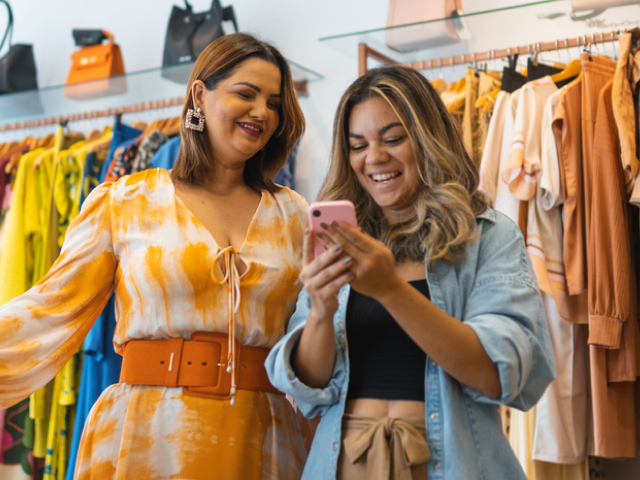Luxury fashion has always been synonymous with affluent clientele and unrivaled customer service, with 53% of luxury consumers saying a superior customer experience is essential for brands in the industry.
In recent years, there has been a paradigm shift in what customers expect out of their shopping & luxury clienteling experience. Digital literacy has become prolific with modern shoppers and the convenience of technology and mobile devices has now become a necessity rather than a commodity.
Luxury retailers are seeking to rethink how they serve their clients to maintain their world-class brand experience. Ultimately, it’s not about what luxury clienteling is to you, but what it is to your customers.
Shifting the focus to local sales and buyers
Before the pandemic sent waves across the industry, travel was a key driver of luxury spending with 30-40% of luxury sales being generated by shoppers in transit and abroad. With international tourism not expected to recover for the next 2 years and global tourism spending at only half of what it once was, luxury retailers are shifting their focus to domestic sales.
McKinsey and Business of Fashion’s State of Fashion 2022 highlights the urgency for luxury retailers to engage more deeply with domestic consumers and invest in clienteling for local brick-and-mortar and ecommerce channels.
For locals, it’s all about familiarity and white glove service.
Upon walking into most luxury stores, shoppers expect to be offered immediate 1-on-1 assistance from associates to guide them along their buying journey. Associates need to be ready to recall a customer’s name, preferences, and purchase history from the first “hello” so that they’re seen as advisors, not just vendors. This is the essence of clienteling in luxury retail.
Empowering associates to offer recommendations to clients based on their specific size, style, and color preferences as well as current local trends makes the experience feel personal, rather than ‘personalized’.
Outreach is a major part of developing personal relationships among your top customers.
Traditional marketing feels generic, whereas associate outreach can be much more targeted and contextual which strengthens the customer relationship.
Whether they’re following up on a purchase, inviting the customer to an event, or telling them about new looks, customers value personal and contextual communication and as a result convert at a much higher rate.
Some seasoned associates may be able to give their clients this experience independently, but to achieve any consistency or scale requires well-defined clienteling practices.
As travel and international shopping pick up speed again, customers still want personalized service and familiarity, putting the onus on modern brands to figure out how to treat everyone like a local.
Meeting the expectations of affluent consumers
While many luxury shoppers are heading to nearby physical stores, there are still plenty of people who prefer the convenience of the online store.
Websites, mobile apps, and social commerce are experiencing a surge in engagement from consumers and becoming a dominant sales channel for many brands.
However, the rise of online shopping doesn’t mean the expectation for quality shopping experiences changes.
While strides have been made to ensure a seamless user experience in online stores, there is still room for improvement when it comes to the level and convenience of personal interaction.
According to a 2022 Forrester report, 44% of US and 46% of UK luxury shoppers expect to interact via virtual assistant when shopping online.
Many companies utilize online chatbot features for virtual interaction, but even with these interfaces becoming increasingly mainstream, there’s a difference between automation and digital clienteling. A majority of consumers say they would rather interact with a live person.
Luxury retailers need to provide the same high-touch clienteling experience online that they do in-store–and a chatbot doesn’t cut it. Instead, many retailers are making store associates available to guide online shoppers, just like if they had walked into a physical location, which is one just reason why adopting clienteling software is crucial for luxury brands today.
One fashion retailer that introduced live video assistance and chat features doubled their ecommerce conversion rate. Maybe even more importantly, they’re also equipping associates to connect and support their VIPs across channels. Whether they’re answering questions over WhatsApp or curating ecomm looks and sending custom links, customers gravitate to brands that can flow seamlessly between channels.
Catering to the next generation of luxury shoppers
Perhaps the most fundamental element to a successful clienteling strategy is knowing your audience, and for luxury retailers, this means redirecting the focus to the industry’s newest generation of shoppers.
The budding generations of affluent consumers are set to account for 70% of the luxury market by 2025 and contribute to 130% of its growth. To foster continued growth, luxury brands need to understand what motivates the younger generations and how to relate to them.
For these generations, the new luxury paradigm is fueled by individual self-expression and conscious consumption with emphasis on brand backstory and cultural credibility.
Luxury products are selected and purchased consciously now and the expectation for brands to embody the same consciousness is not taken lightly. Gen Z, more so than Millennials, values sustainability, integrity, and authenticity from brands and they need these ideals to be backed with action.
Leading luxury retailers are adapting by communicating their stances and delivering action on environmental, ethical, and social issues. Stella McCartney leads in sustainability through environmental and animal welfare initiatives and relays this message across channels.
Equipping associates to share these stories with consumers in a value-centric way provides consistent messaging on who the brand is and what they stand for. Understanding and adapting to the next generation of luxury consumers gives retailers a lead on the future of the industry.


